sanctuary
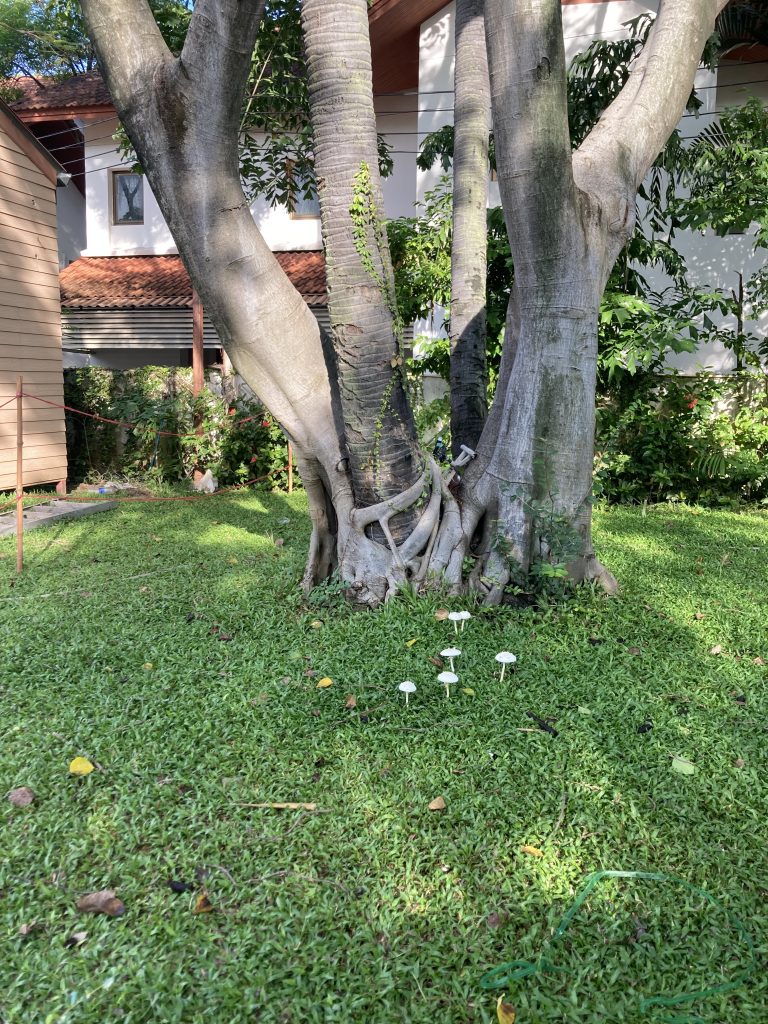

I’ll say this- the Department of Transportation does a lot of things right. Would a more robust train system be nice? Sure, but given that the interstate network is what we’ve been handed from previous generations, USDOT mostly pulls its weight and makes for a fairly smooth, fairly efficient ride- especially when you discover, like I have, that they also maintain the shadowy Gray Road version of the interstate. That’s a lot to handle in and of itself, what with having to retrieve people who stop for bathroom breaks and get lost over the Gray Shoulder. I wouldn’t do that job. Not for anything.
Next to the Gray Road Network, the tailored ‘Wrong Way’ system is a fairly underrated piece of American infrastructure. It’s saved me from trouble twice and, with a sudden abdomen-clutch-wavy-bike-stop, I get the sense it’s intervened on my behalf for the last time.
‘Why do chances always come in three? Baseball, probably. The traditions of baseball are reflected in nearly every situation in which rules or regulations exist in America, insinuated, like a recessive gene, in the very makeup of the country.
In this instance, the rule of three applies to the number of lifetime warnings a traveler is granted by ‘The Wrong Way’ and, given that these warnings are only delivered in the absolute direst circumstances and only in response to situations that can be avoided by going the opposite direction, the average person rarely needs the lot of them. Most truly disastrous events have their roots in people long before they hit the road.’
I don’t think much of it, at first, this final intervention. I pull off to the shoulder, like I have in the past, and I chew my lips and second guess myself (like I have in the past). The placement of ‘wrong way’ signs is not always clear, even in mundane situations, and it’s easy to mistake a warning pointed at other drivers for one that pertains to me.
The longer I look, however- the further I trace the road I’d planned on taking and see, along it, several dozen more ‘wrong way’ signs, the more I’m sure. And rather than relief (or, along with relief) I feel a hollow sort of dread.
There aren’t many objective ways to gauge the length of a life until it’s near to ending. I’ve had my last warning, and it seems as clear a sign as any that this journey, if I choose to continue it, will be the death of me.
-traveler
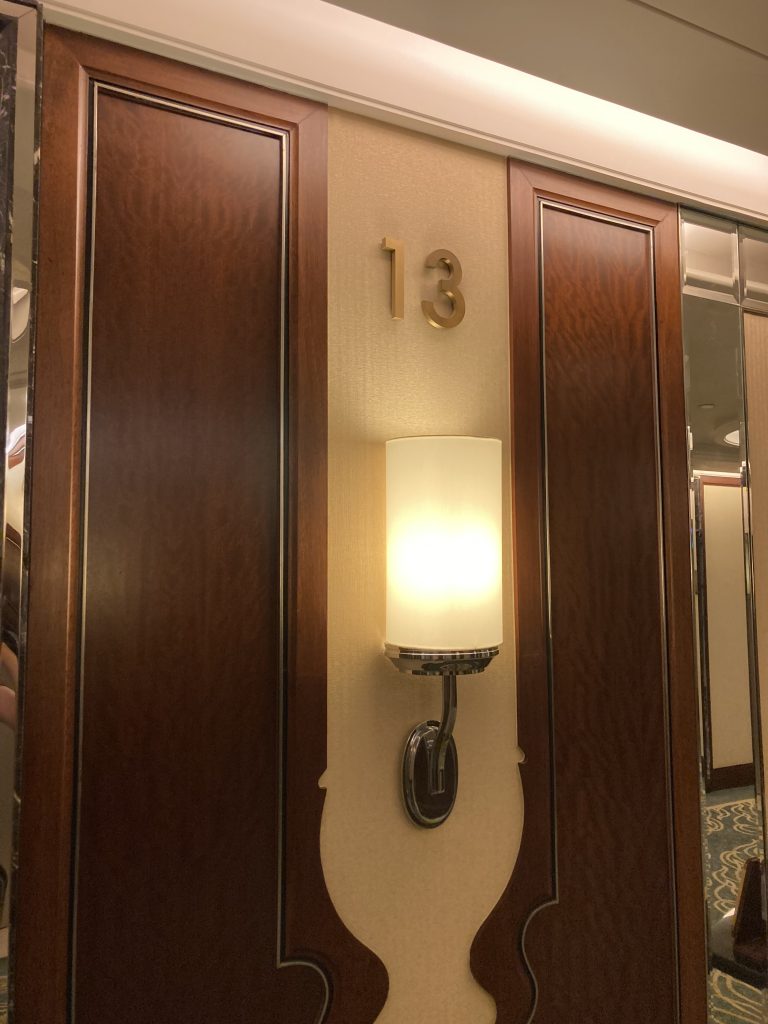
I’ve let myself get out of shape somewhere along the way. It may have started when I built the bike- before that I’d been walking and hitchhiking and lugging everything I owned on my back. I was fit, for a while, and then a little sickly. A little worn down. Tired. When I built the bike, some part of me decided it would never approach that low weariness again.
The truck, before all that, just wouldn’t go certain places. It was big and heavy and anything rougher than freeway would shake pieces of it off onto the shoulder. Sometimes those pieces were important so, though it theoretically was capable of four-wheel drive, I rarely risked any road that might require it. I was fitter, then, too. Healthy, even.
The bike has encouraged me to keep more than I can carry and it manages to reach places the truck wouldn’t. It’s held together surprisingly well. The bike has made me lazy and so, in climbing to my spot in ‘The Slumber Complex,’ I approach that old weariness faster than I imagined was possible.
‘It must have taken some doing to think of a name like ‘The Slumber Complex’ for a structure that is just a bunkbed taken to an unwarranted extreme. Dozens of beds wide, hundreds of beds tall, the addition of an exterior shell in 2017 makes ‘The Slumber Complex’ less like a bunkbed and more like a shitty hostel than ever before. It is the nearest thing to a human hive that has yet existed due, in part, to a work-to-stay policy with a focus on expansion.
In plain terms: you can stay however long you want if you build yourself a new bed each night. A lot of people are more than happy to take ‘The Slumber Complex’ up on that offer, and with the shell in place, the interior has taken on a density some might call unsustainable. The current state of ‘The Slumber Complex’ is difficult to describe. It is as wide as a field, as tall as an office building, and as tenuously creaking as an old home’s wooden staircase. Traversing it is like climbing a tree- like waking in the middle of the night during a sleepover, having to tip-toe over the unconscious bodies of friends to reach the bathroom.
There is no bathroom, here, reader, only designated overlooks and the filthy safety nets below them.’
I took a picture of the board map in the lobby, both for reference and to preserve a sense of ‘The Slumber Complex’ at what must be the beginning of its decline. The old map has been annotated and the annotations have seen so much further annotating that it’s difficult to read two-dimensionally. I noted that bunks used to follow a fairly simple coordinate pattern, something like 12-1-3 would be the first bunk in the third row on the twelfth level. Now there are so many partial levels and rows that my own bunk assignment is: 27JA-172R-13F/F.
There’s an app that’s supposed to tell me where I’m going but it asks for access to my photos, my microphone, my camera, and just about every other app I have installed as soon as I open it. Once I deny the permissions, the interactive map functions so slowly that I wonder if it’s sulking. I delete it and try to make sense of the physical signage instead, working my way up a few levels, and then wandering between staircases as a means of resting. By the time I’ve reached the 14th level, I seem to have found my general interior zone. As far as I cant tell, the letters indicate bunks that don’t correspond to the original, whole-number system and work roughly left-to-write (or down-to-up if we’re talking altitude). Forward slashes indicate bunks that crisscross, which seems to be a way to fit beds almost directly on top of each other without smothering the visitor on the lowest bunk.
I pause on the 16th level to congratulate myself on cracking the code and to drink a soda that I’d been saving for dinner. I’ve hardly turned the cap when the Stranger appears out of nowhere and kicks me over the nearest railing.
I realize, in the first second of that fall, that understanding ‘The Slumber Complex’s’ system and knowing where I am within it are two very different things. Facing upward, I have no idea whether the drop will be a yard or fifty feet. It’s with mixed-emotions that I slam onto a sub-floor that’s been relegated to upper level-15. My momentum carries me over another ledge and I bounce downward like a ball in a pachinko machine, cracking ribs and twisting limbs along the way.
Between falls I become aware of a black cloud above me- the Stranger’s rabbit, pulling its dark, silken fur through the bunks in pursuit. I plummet, again, land, and roll into a railing, finally coming to a stop on my back. The rabbit leaps down on top of me and the world goes dark. It’s almost peaceful until the black rabbit begins to burrow into my chest.
I try to pull the thing off me but each handful of fur ends up being too long to create any tension. The rabbit’s body evades my fingers, even as I scrape them over the bright spot of pain where it’s landed. Between heartbeats, I wonder if it’s already inside me, if it’s worked its way under my ribcage or into my stomach.
Then, the black rabbit squeals and the veil lifts. ‘The Slumber Complex’ shivers and creaks about me as other visitors clamber between bunks to see what the ruckus is. They help me to sitting. They assume I stepped wrong and slipped over an edge. The Stranger and his rabbit are gone again.
“Fuck!” Someone shouts. “What the hell is that?”
I push a hand away and make it to my knees to see what he’s pointing at. It’s only Hector, chewing a mouthful of long black fur.
-traveler
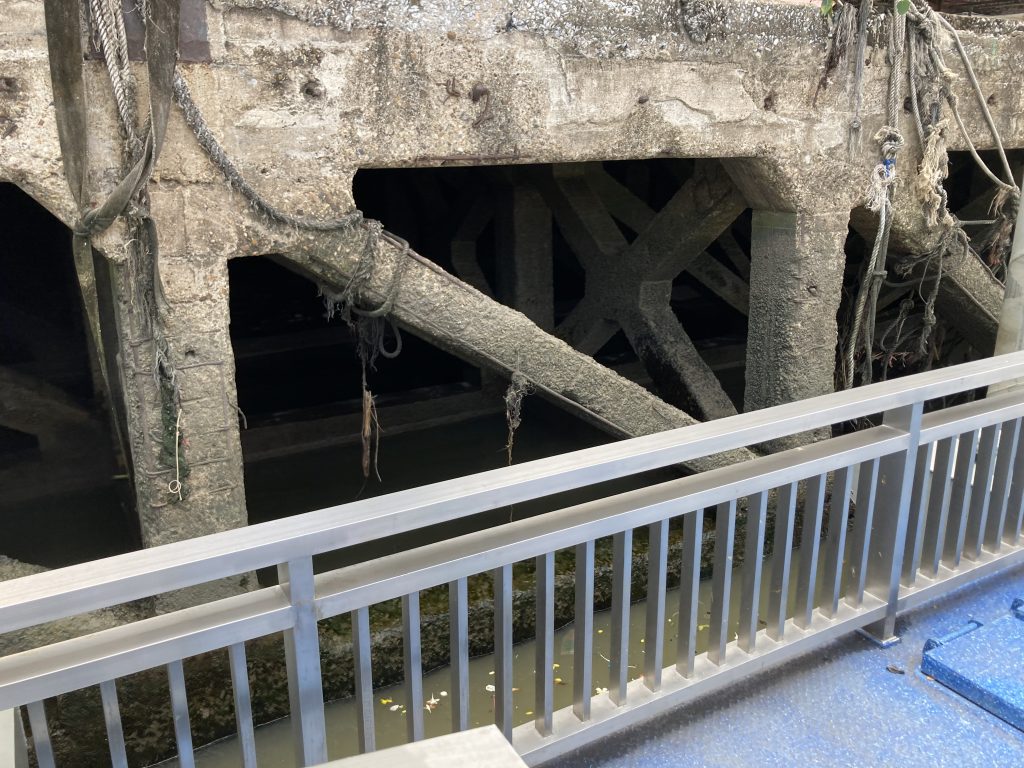
Well, here I am, featured in another museum. First it was the ‘Museum of Still Mirrors’ which was, really, just a man who drew caricatures so quickly that he could have a picture of any given guest ready before they’d finished perusing the other displays. There was the ‘You-seum,’ a sort of new age therapeutic experience led by a guy that can’t have had any real credentials in the field. Tangentially, that was a drastically different experience than the ‘You See-Em?’- which was a museum, I guess, except that it consisted only of landscape shots blown up to a pixelated blur and grainy video footage collected by a woman that would, occasionally, shout “you see ‘em?” while pointing at the empty spaces between trees. After 90 minutes of telling her I didn’t see anything she just shrugged and said “Well, they see you.”
This is all beside the point. The ‘As Seen on TV Museum’ is not one that features me as a technicality or a gimmick. I am featured under the theme and, worse, I am named.
‘Few descriptors boast, with such confidence, the low quality of a product as the phrase ‘as seen on TV.’ The ‘As Seen on TV Museum’ is the exception that makes the rule, it being a surprisingly thorough examination of everything that has ever been featured on television at one time or another. Yes, you have some dresses from soap operas and some costumes from sitcoms to bolster the foyer, but the vast majority of the sprawling collection spotlights that which is normally outside the spotlight altogether.
Here you will find various cardboard props, made so that they will pass muster only in the far backgrounds of scenes. Here you will find newscaster’s desks and politician’s podiums. Here you will find profiles- analyses, even- of the headless models that sometimes feature in stock footage for illustrating the obesity crisis. Everything that has ever been seen on TV has a place here. Of course, this has not been proven, because absolute proof seems an impossible task. This has not been unproven either, for every person that has entered the ‘As Seen on TV Museum’ with a challenging snippet of footage has found a display devoted to it, often emerging fractally from unrelated displays and so seamlessly that they might have grown there naturally.’
What I find out, very quickly, is that the ‘As Seen on TV Museum’ has a highly sensitive security system in place. It issues a light warning ping when I reach in to remove the little model of myself from a scene- one in which I was captured in the back of a news story about migrating geese. It pings again when I scratch at my name on the small placard which gives a concise but surprisingly accurate biography of myself. It makes a much louder, much more piercing sound when I tug at the model again and feel one of its feet give from the display.
I step backward and reassess the situation before a new ping startles me and I see that Hector, left to his own devices, has begun to nibble at a small model tree under the main display behind me. Finally, the system issues a low, almost sarcastic ping as I make a note of the fire escape and of the folded map I was given when I bought my ticket.
The sirens start before I’ve even leaned over the display again. I yank the model-me from the base of the display and bolt into the fire escape though, in this case, ‘into’ literally means I run into a stationary door- a prop fire escape that I mistook for the real deal. Hector bolts back to the model tree and the siren squeals indignantly. The footfalls of a surprisingly robust security team grow nearer as I gather the wayward rabbit and push through the real fire exit on the opposite side of the room.
The siren is sounding in the parking lot, much to my dismay, and any hope I had to blend in to the crowd disappears as I plow through the only other people visiting- a previously happy family with a dozen kids of indeterminate age and gender. I force any sort of shame I might feel into the back of my head, saving it for later when I’m trying to sleep. All I can think, now, is that if I linger too long, if I start a police chase, I might end up back on TV and all of this will have been for nothing.
-traveler
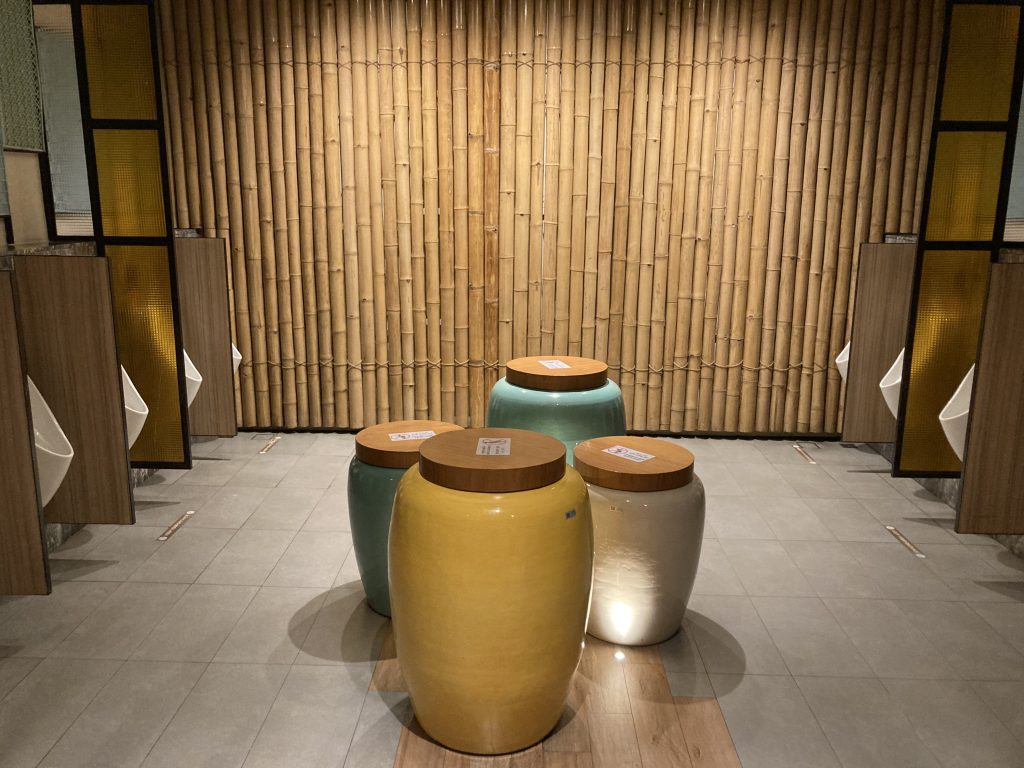
‘There are few public places as familiar and uncomfortable as ‘The National Reunion Hall,’ a venue that reeks of stale coffee and fifties-era cigarette smoke. Despite the matted carpets and dusty décor, ‘The Hall’ hasn’t taken a reservation in more than a decade, re-directing phone requests to a pre-recorded message without so much as a courtesy ring. The message, read aloud by a man that sounds as though he is speaking the words from his deathbed, indicates that there has been a spike in demand for places such as ‘The National Reunion Hall’ and that the owners will place a call back at the soonest moment. The message ends before allowing the caller to leave any of their information. There has been some speculation in recent years that the message is not pre-recorded at all. Samples have revealed slight variations in tone and instances of subtle throat-clearing that might be attributed to the dying man’s weakened state. Attempts to communicate with him or to shock him from his script with loud noises or lurid replies have failed. The man’s identity remains unknown and is ultimately irrelevant.
The trick, if one might call it that, is nobody needs a reservation to attend one of the daily reunions. There are no set lists- nobody checking names. This could be chalked up to sloppy management except that one always arrives at a reunion at which they belong. In that way, management is the furthest thing from sloppy. Management is impossibly, terrifyingly effective.’
When I arrive at ‘The National Reunion Hall,’ I find that my 20-year high school reunion is taking place, there. I leave without showing my face- literally without taking off my helmet- and I return two days later, assuming the coast has cleared. This time it is a traveler’s reunion and, though it remains eerily pertinent, I figure it is bound to be less personal and certainly less awkward than having to mingle with the weary present versions of my high school peers.
I’m wrong, of course. When I step into the hall I find it decorated and catered for a hundred people and only one other person has shown up- the Stranger who, loyal readers might remember, had previously decayed into a sort of wight and then a specter and then a more traditional shadow. My shadow. I check my shadow and see it remains much as it has been these past couple years. It shifts uneasily under the rainbow lights that swirl above a vacant dance floor.
The Stranger looks up from a plate of dainty sandwiches and seems as surprised to see me. He scans the hall in case anyone else has managed to sneak inside. He opens his mouth and lets a gob of bread and cheese fall out onto the paper plate.
“I thought you were dead,” he says.
Something shifts beneath his chair and I step backward, thinking it’s his own shadow that’s reaching out. It’s only a rabbit, its hair tied in long, gaudy braids alternating black and gray. It drops a half-chewed carrot on the floor and hisses so loud and so long that I worry it might pass out. Hector shivers in my arms.
“I thought the same about you.”
We are quiet for some time, each of us trying to figure out what to say next. I’m about to speak when the Stranger cuts me off.
“This is my fault,” he says, “I walked away from a reunion of the strangers when I first arrived here three days ago. I run in limited circles, you know, so ‘The National Reunion Hall’ must’ve had to scramble to come up with another reunion on the fly, bringing you back from the dead as a workaround. Sorry about that.”
The Stranger picks up the half-chewed sandwich and pops it back in his mouth. His rabbit hisses like a leaking balloon.
“That’s all right,” I say, and then I shake my head, “Wait, I mean, no- you were dead. Otherwise, though, yes. I agree.”
The music playing from the dance floor shifts to a slow song and the lights dim to sultry. The Stranger crumples a napkin onto his plate and scoops his rabbit up from the floor.
“Let’s not argue,” he says, and he begins to step backward between the chairs, mirroring the movements he once used to disappear into the darkness of ‘Echo Cave.’ “Maybe I’ll see you around,” he says, “Maybe-”
The Stranger yelps and trips backward over a folding chair. He’s gone before I’m able to weave my way through the tables, having disappeared into the institutional geometry of the carpet, I guess, or having slipped between the course fabric of the table cloths. I don’t pretend to understand the sort of magic he does. It’s quicker than exploiting the gray roads. More prone to glitches.
Hector sniffs cautiously at the Stranger’s chair while I bag up a week’s worth of food from the buffet, the very thin silver lining to this whole encounter. I suppose a man could eat perpetually at ‘The National Reunion Hall,’ but only if he were willing to spend each night re-living the past with the people he thought he left there. Everything comes at a cost on the Wayside and ‘The National Reunion Hall’ is just a hair outside of my budget for a repeat visit.
-traveler
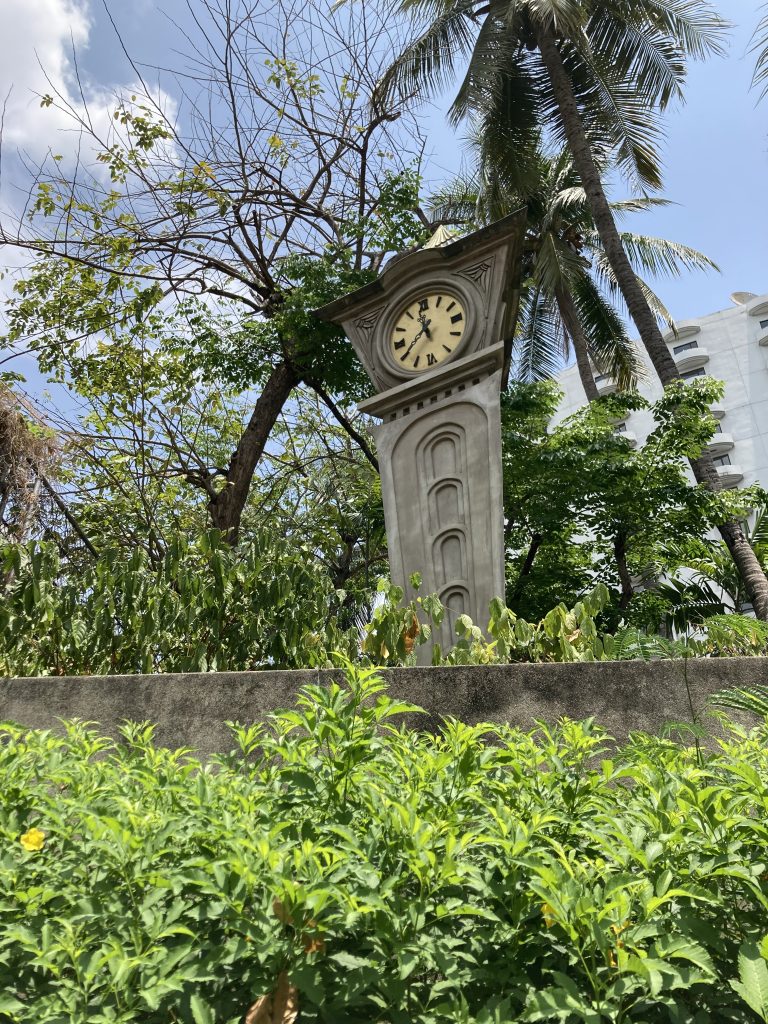
© 2024 · Dylan Bach // Sun Logo - Jessica Hayworth